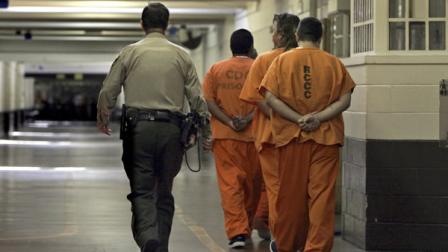A pillar of his plan to let the "bulldozers roll" on big projects in California has been an overhaul of the state's landmark environmental law, which can tangle development in litigation for years.
Yet before he even boarded his return flight, the governor said he was giving up on any substantial revision this year of the 40-year-old law, which he says stands in the way of progress.
The appetite for such change "is bigger outside the state Capitol than it is inside," Brown said as he sipped tea in the southern port city of Shenzhen on his last full day of events abroad. "This is not something you get done in a year. There are very powerful forces that are strong in the [Democratic] Party that will resist."
In fact, his plans to change the law, coupled with his infrastructure agenda, already face resistance on several fronts.
The state Democratic Party, holding its annual convention in Sacramento last weekend, had already resolved publicly that it "stands with the labor and environmental community" in support of the existing California Environmental Quality Act. Party members called on Brown and lawmakers to "oppose any efforts to weaken this law."
Nearly two dozen Democrats in the Legislature have signed a letter calling on Brown to substantially scale back his proposal for a massive water project in the Sacramento-San Joaquin River Delta.
And at a recent hearing, a group of state senators panned the administration's bid to spend $500 million to make public school and community college buildings more energy-efficient, advising that the plan be rewritten because it does not target the districts that need it most.
In addition, voter support for the high-speed rail system the governor is championing for California has slipped considerably as the cost of the project has leaped by billions of dollars.
Whether the turbulence is enough to impede Brown's infrastructure push remains to be seen. So far, the governor has opted to stay above the fray until the real deal-making begins — typically well after he issues his revised budget in May, during final spending negotiations in June and when the Legislature is preparing to adjourn at summer's end.
The governor's retreat on the environmental law took some of his allies by surprise. Senate President Pro Tem Darrell Steinberg (D-Sacramento) said he would continue to work on comprehensive legislation to "update" the act, despite Brown's remarks from overseas.
California's environmental law is one of the strictest in the nation, requiring state and local agencies to identify all potential effects of a project and take all possible steps to avoid or mitigate them. Opponents of big projects can use the requisite impact studies and reviews as tools to block any building in court.
A coalition called the CEQA Working Group catalogs cases in which it alleges the law is misused. It cites Mulholland Drive neighborhood groups, unhappy with the aesthetics of a bridge planned by theCalifornia Department of Transportation, using threats of a lawsuit to force the state to revise construction plans for the 405 Freeway.
That added millions of dollars in costs and months of delays, the group says, and prolonged the chaos of "Carmageddon."
Lawsuits by neighborhood groups have caused the environmental approval process for the Expo Line extension to Santa Monica to drag on for eight years, according to the coalition. A group called California Unions for Reliable Energy has filed dozens of environmental lawsuits that can delay construction of power plants, only to drop its objections once favorable labor agreements are secured.
The law "has turned into something it was never intended to be," said Matt Regan, vice president of the Bay Area Council, a business advocacy group promoting changes in the law. "The bulk of CEQA lawsuits filed by labor are not for environmental purposes.
"But unions are not the only ones abusing this law," he continued. "Businesses do it. NIMBYs do it. It has become the default for people who want to stop anything."
Such groups say, as Brown does, that they want to update the law, not abandon it. Every other living California governor also says the law needs updating.
George Deukmejian, Pete Wilson and Gray Davis penned an opinion piece in the Sacramento Bee earlier this year that said abuses of state environmental regulations "are threatening California's economic vitality, costing jobs and wasting valuable taxpayer dollars."
Environmentalists and labor unions say the criticism is overblown. The overwhelming majority of lawsuits filed under the law, they say, are motivated by legitimate environmental concerns. Champions of the regulations have commissioned reports tying the state's economic growth over the last few decades to the strong environmental protections.
"This is another cry for deregulation without cause or reason," said Robbie Hunter, president of the State Building and Construction Trades Council of California. "The people behind this say it is hurting the economy in this state, and we don't think it is true.
"…Our organization is desperate to cut red tape and get people to work. If we saw this law as an obstacle to projects, we would be on the other side of this thing," said Hunter, whose union is usually an ally for Brown.
"We believe the governor is a great person for the environment and making decisions on the facts," Hunter said. "All the facts are not on the table yet."
Brown seems confident that he has all the facts he needs. He vows that the law will be changed by the time he leaves office and suggested that he may yet try to extract concessions from lawmakers this year, as part of other negotiations.
"OK, you want that?" Brown said, offering a snapshot of how such negotiations might go. "I'm going to add a little reform over here."
He is leaving other options open, too. Asked if he might consider taking his case straight to voters — a move that could stir up further problems within the Democratic establishment — Brown said: "That's always a possibility."







